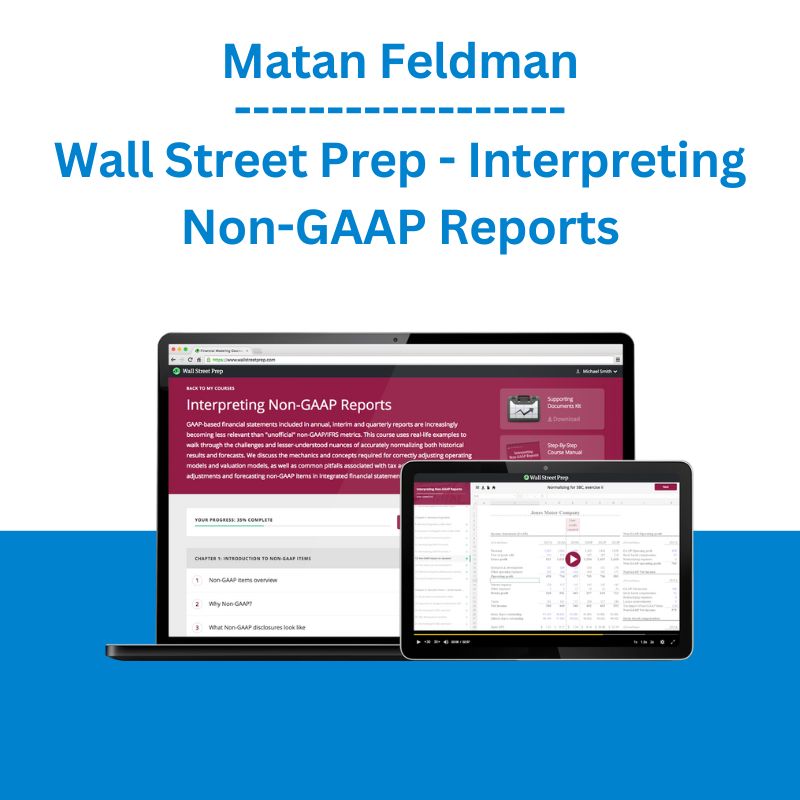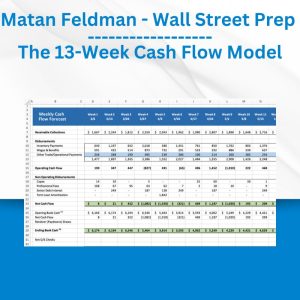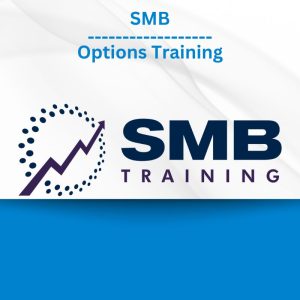*** Proof of Product ***

Exploring the Essential Features of “Matan Feldman – Wall Street Prep – Interpreting Non-GAAP Reports”
Interpreting Non-GAAP Reports
41 Lessons
2h 57m
82,189 Students
Learn how to interpret non-GAAP disclosures and model their impact on historical results, forecasts and valuation. This course on interpreting non-GAAP reports is designed for investment bankers as well as equity research and credit analysts.
Why you should take this course
- GAAP-based financial statements are increasingly becoming less relevant than “unofficial” non-GAAP/IFRS metrics.
- Here, we walk through the challenges and lesser-understood nuances of accurately normalizing historical results and forecasts.
- We discuss the mechanics and concepts required to correctly adjust operating and valuation models as well as common pitfalls associated with tax adjustments, share count adjustments and forecasting non-GAAP items in financial models.
Who is this program for?
This course is designed for professionals and those pursing a career in the following finance careers:
- Investment Banking
- Buy-Side Equity Research
- Sell-Side Equity Research
- Private Equity
- Credit Research
- FP&A and Corporate Finance
Wall Street Prep’s Interpreting Non-GAAP Reports is used at top financial institutions and business schools.
Prerequisites
The program assumes a basic introductory knowledge of accounting (e.g. interaction of balance sheet, cash flow, and income statement) and proficiency in Excel. Students with no prior background in Accounting should enroll in the Accounting Crash Course. Students with limited experience using Excel should enroll in the Excel Crash Course.
Course TOC
Chapter 1: Introduction to non-GAAP items
1. Non-GAAP course welcome
2. Course Downloads
3. Non-GAAP items overview
4. Why Non-GAAP?
5. What Non-GAAP disclosures look like
6. Why firms are motivated to show Non-GAAP
7. Prevalence of non-GAAP disclosures
8. Regulatory oversight of non-GAAP
9. Two broad types of non-GAAP items
Chapter 2: Nonrecurring items
10. Nonrecurring items under GAAP
11. Unusual or infrequent items under GAAP
12. Non-GAAP nonrecurring items
13. Normalizing GAAP financials
14. Normalizing GAAP financials, II
15. Non-GAAP impact on valuation
16. Too many non-recurring items?
17. Nonrecurring items disclosures in practice
18. Income statement classification
Chapter 3: Noncash items — Stock based compensation
19. Introduction to non-cash items
20. Argument for & against adding back SBC
21. Stock based compensation (SBC) review
22. Normalizing for SBC, exercise I
23. SBC disclosures in practice
24. Normalizing for SBC, exercise II
25. Amortization of capitalized SBC
Chapter 4: Noncash items — Intangible asset amortization
26. Noncash items overview
27. Acquired intangibles exercise
Chapter 5: Historical EBITDA
28. Introduction to EBITDA
29. EBITDA and Adjusted EBITDA exercises
30. Determining Athena’s historical EBITDA
Chapter 6: Forecasting EBITDA
31. Forecasting EBITDA
32. ATHN bottom up EBITDA, exercise I
33. The problem with the bottom up approach
34. ATHN bottom up EBITDA exercise II
35. ATHN EBITDA solution walk through
36. Top down EBITDA forecasting
Chapter 7: Other non-GAAP topics
37. Non-IFRS disclosures in practice
38. Non-GAAP issues in a 3-statement model
39. Non-GAAP diluted share count
40. Non-GAAP Items Conclusion
Non-GAAP Reports Review
41. Non-GAAP Reports Review
Please see the full list of alternative group-buy courses available here: https://lunacourse.com/shop/










 SMB - Options Training
SMB - Options Training  Dave Landry - Stock Selection Course
Dave Landry - Stock Selection Course